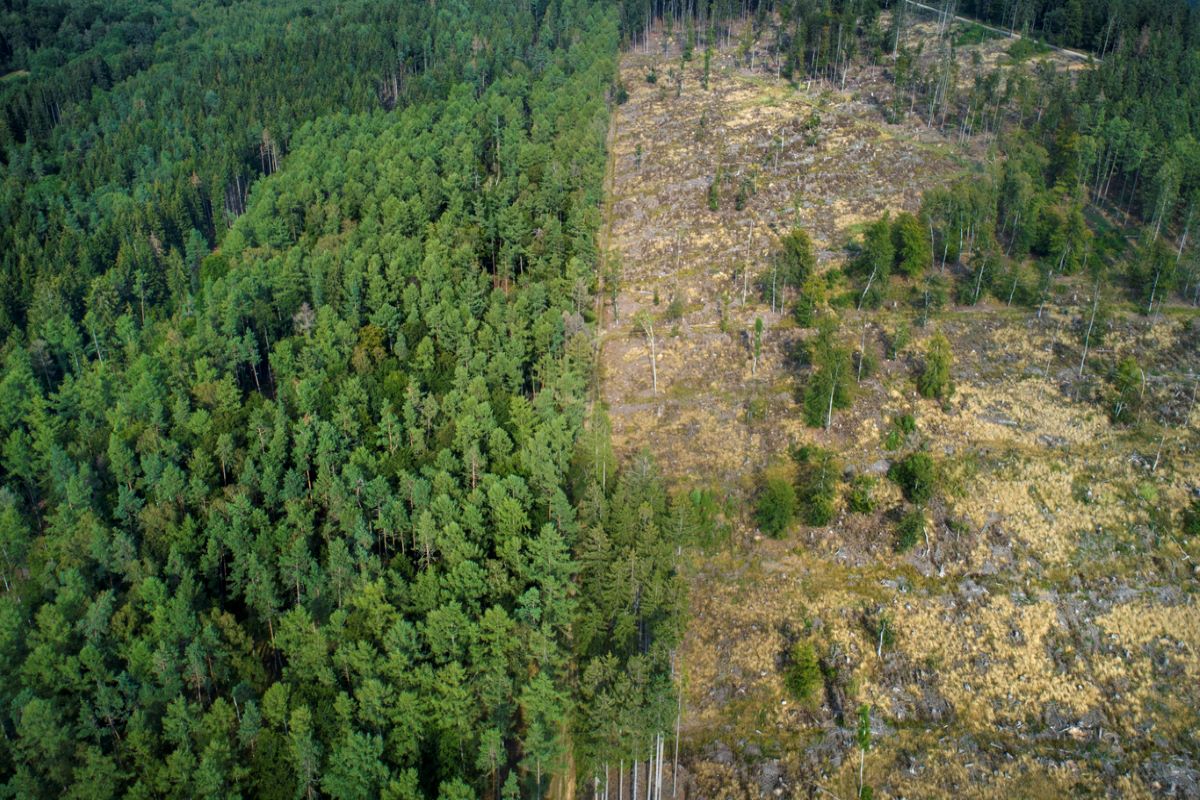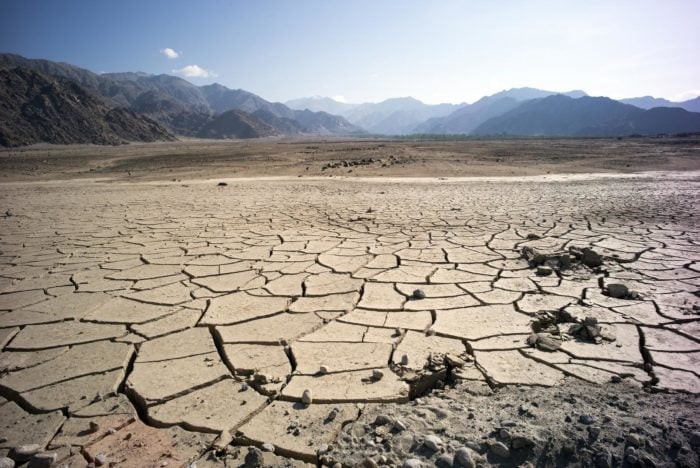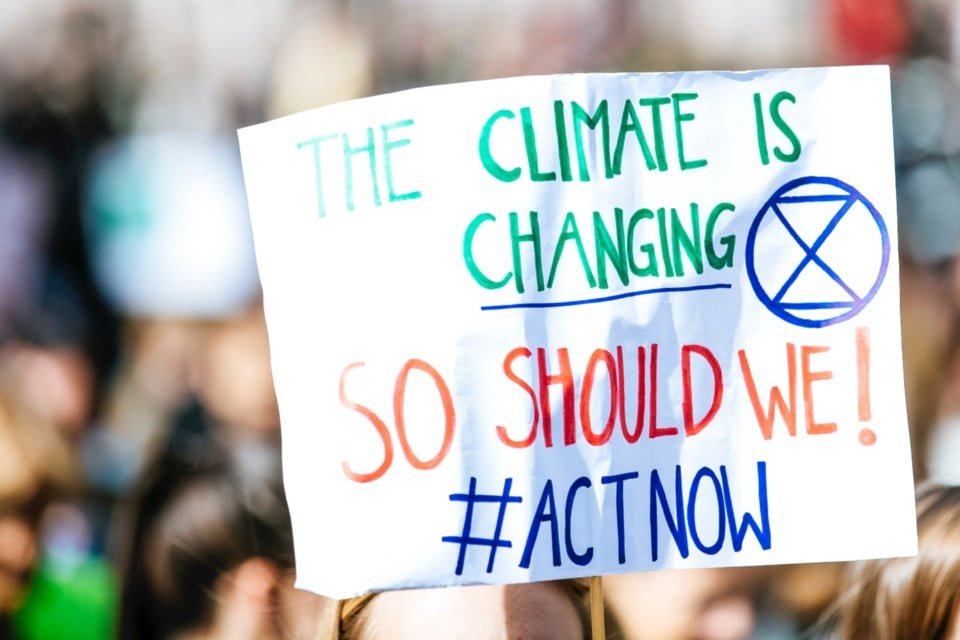In a report published by globalforestwatch.org, from 2001 to 2023, India lost 2.33 Mha of tree cover, equivalent to a 6.0% decrease in tree cover since 2000. The top 5 regions – Assam, Mizoram, Arunachal Pradesh, Nagaland, and Manipur accounted for 60% of the forest tree cover loss across the country. The average tree cover loss has been recorded as 66.6 kha and Assam has suffered the highest tree cover loss value at 324 kha. Data shows that ‘Between 2001 and 2022, an average of 51.0 Mt per year was released into the atmosphere as a result of tree cover loss in India. In total, 1.12 Gt of CO₂e was emitted in this period.’
In a report published by globalforestwatch.org, from 2001 to 2023, India lost 2.33 Mha of tree cover, equivalent to a 6.0% decrease in tree cover since 2000.
According to Pachamama Alliance, ‘deforestation is the clearing, destroying, or otherwise removal of trees through deliberate, natural, or accidental means. It can occur in any area densely populated by trees and other plant life.’
Why should this forest loss concern us?
Deforestation is one of the primary factors that accelerate global warming. According to NASA, there are four major gases that contribute to the greenhouse effect. ‘A vital component of the atmosphere, carbon dioxide (CO2) is released through natural processes (like volcanic eruptions) and through human activities, such as burning fossil fuels and deforestation.’

This report by rainforest-alliance.org informs us that deforestation contributes to global warming in three different, closely-connected ways:
- Trees help in reducing the carbon content in the atmosphere by absorbing the carbon, so felling of trees would mean that the greatest natural absorbers of carbon would reduce,
- When trees are cut and destroyed, the carbon content they have been storing within will be let out in the air again, thereby increasing the levels of carbon in the atmosphere, and
- Whatever most commonly replaces destroyed forests, mostly livestock and agricultural lands, would only generate more carbon, thereby rapidly increasing the carbon content.
The most common dangerous effects of deforestation on climate include global warming, changes in weather patterns, water cycle and quality of life, and acidification, reports Earth Eclipse. There are also many more adverse effects of deforestation.
Climate change, global warming, and India
It is a deeply upsetting fact that India is ranked fourth among the list of countries most affected by climate change in 2015. India has the world’s highest social cost of carbon. A report by the London-based global think tank Overseas Development Institute found that India may lose anywhere around 3–10% of its GDP annually by 2100 and its poverty rate may rise by 3.5% in 2040 due to climate change.
WWF.org informs us that the majority of the deforestation is linked to meat, soya and palm oil. Huge swathes of tropical forest are removed so the land can be used for growing soya to feed farm animals like pigs and poultry, all to meet the insatiable global demand for cheap meat. This data shows us that as US’ beef production reduces, it would predictably lead to an increase in India and other countries like Brazil, China, and Australia.
Can this forest loss be prevented or reversed?
How can this be prevented? It is not that the reduction of forest loss is practically impossible. According to this report by globalforestwatch.org, Indonesia’s forest loss has been historically low levels since 2002, being the country with the highest forest loss reduction value. Five other countries that follow, showing reduction in forest loss are Costa Rica, China, Malaysia, Cote d’Ivoire, Vietnam. How has this been made possible in Indonesia? This significant ‘historically low value of forest loss’ in Indonesia has happened because of the combined efforts and commitment of mainly the government and corporate sectors. The Indonesian government has implemented policies and corrective actions, increased fire prevention and monitoring efforts, and terminated granting new licenses on primary forest land.
EDF reports that ‘Any realistic plan to reduce global warming pollution sufficiently—and in time—to avoid dangerous consequences must rely in part on preserving tropical forests. Conservation costs money, while profits from timber, charcoal, pasture and cropland drive people to cut down forests.’ In the Indian context, the primary drivers of the destruction of forest lands have been shown to be cattle rearing and cultivation of oil seed crops. Also, it is said that the United Nations’ Reducing Emissions from Deforestation and Forest Degradation (REDD) program has channeled over $117 million in direct financial aid and educational support into national deforestation reduction efforts in 44 developing countries across Africa, Asia and Latin America since its 2008 inception.
Leaders across the world are claiming to take different measures to bring down the emission rates and promote measures to combat climate change. PM Narendra Modi has also made commitments at the COP26 to reduce its emissions. With such grand promises being made, the huge loss of forests in the north-eastern parts of the country comes as disappointing. There are promises of net zero emissions as part of the BJP Manifesto, and the INC has promised to address climate change issues with the seriousness they deserve. But would either party or any politician in India take the climate crisis seriously? How realistic are these plans? Is the average Indian as aware of the consequences of deforestation as one should be and knowledgeable enough to insist that the politicians they vote for prioritise the issue? Or do our politicians not prioritise the issue, banking on the ignorance of the general public?
How can individuals help?
‘Earth provides enough to satisfy every man’s needs, but not every man’s greed’ Gandhi ji had said.
WWF.org suggests that one’s diet has the biggest impact, and we all could consider minimising our meat intake, considering meat a weekend treat. We should also try to follow a predominantly plant-based diet, especially now that there are plant-based variants of almost anything one can imagine, in different types of cuisines across the world. Also, we must try and avoid palm oil as much as possible and also reduce paper consumption as much as possible. The World Counts shares 15 different ways in which individuals can support the fight against deforestation.
Most leaders would take these issues seriously only when the public stand up for the environment and demand that harmful practices like deforestation and one-time-use plastic consumption should be reduced.
Most leaders would take these issues seriously only when the public stand up for the environment and demand that harmful practices like deforestation and one-time-use plastic consumption should be reduced. Starting from the year 1970, 22nd April is labelled as ‘Earth day’ around the world. But did our state government and the central governments do anything substantial on this day, this year? How did our family and we contribute to making the planet greener? Let us, especially the privileged and educated people, think about what changes we can make in our daily lives and how we can and should hold our elected officials accountable to make mandatory changes to reduce deforestation in the country.
About the author(s)
Lakshmi Prakash is a data scientist. She sees practicing equality, humanity, and science as the only possible path to a progressive future and holds that the absence of any one of these will negate any growth in other areas. Her hobbies include reading fiction and non-fiction, learning something new, brisk-walking, cycling, and writing a chapter only to forget where she saved it.






